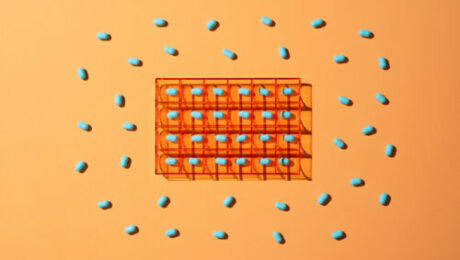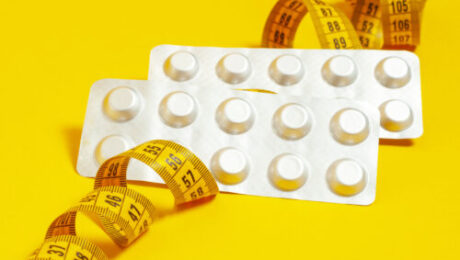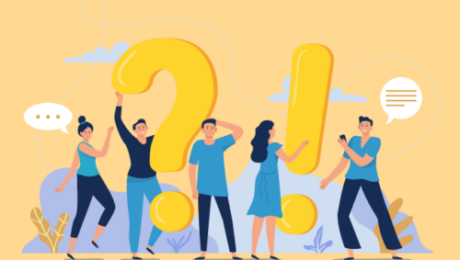Understanding the Impact of Biosimilars on Employer Health Care Costs
This article is from RISQ Consulting’s Zywave client portal, a resource available to all RISQ Consulting clients. Please contact your Benefits Consultant or Account Executive for more information or for help setting up your own login.

Rising health care costs will likely continue to impact employers in the foreseeable future. The introduction of biosimilar drugs as an alternative to biologics may bring value to health care by offering cost savings and increasing employee access to necessary medications. While biosimilars can help employers mitigate rising prescription drug costs, employers will need to learn more about them before considering how their health plans can accommodate these newer drugs.
This article explores biosimilar drugs and their impact on employers’ health care costs.
Biosimilar Overview
Unlike generic drugs, biosimilars are not identical to their reference biological products (also called the brand-name counterpart) and aren’t created from synthesized chemicals. A biosimilar drug is a biological product produced from living organisms—humans, animals or microorganisms. Approved by the Food and Drug Administration (FDA), biosimilars are similar to the reference drug (a previously FDA-approved biologic), but have no significant clinical differences. Compared with biologics, biosimilars have the same strength, dosage and potential side effects but provide the same treatment benefits.
The FDA rigorously evaluates biosimilars to validate their efficacy, safety and quality. The FDA has approved over 40 biosimilars; however, not all are commercially available.
Biosimilars are safe and effective treatment options for many illnesses, including chronic skin and bowel diseases (e.g., psoriasis, irritable bowel syndrome, Crohn’s disease and colitis), arthritis, kidney conditions and cancer. They can potentially increase access to lifesaving medications at a lower cost.
Impact on Health Care Costs
As prescription drug costs continue to rise, employees are realizing increased out-of-pocket expenditures for the medications they and their families depend on. Specialty drugs, including biologics, are the fastest-growing part of drug costs.
The Biosimilars Council estimates that 1.2 million people will have access to more affordable biologic medicines by 2025 due to the availability of several leading biosimilars. The exclusivity period for the following drugs either has ended or will expire before 2025, which will open the door for biosimilar approval:
- Humira (adalimumab) for rheumatoid arthritis (RA), Crohn’s disease and ulcerative colitis
- Remicade (infliximab) for RA, Crohn’s disease and ulcerative colitis
- Neulasta (pegfilgrastim) to prevent infection following chemotherapy
- Enbrel (etanercept) for RA
- Avastin (bevacizumab) to treat eye diseases and different types of cancer
- Lucentis (ranibizumab) to treat eye diseases
- Rituxan (rituximab) to treat certain autoimmune diseases and types of cancer
Five of those seven products are among the country’s biggest-selling brand biologics, accounting for more than 30% of total biologic sales in the United States. The research further suggests that women, lower income and elderly individuals stand to benefit most from access to biosimilars. Utilization demographics of those previously-mentioned specific products reveal that 86% of patients are older than 40, 67% are women and 42% are low-income.
Research suggests that large and self-insured employers have the most to save regarding biosimilars. According to The ERISA Industry Committee (ERIC), in 2018, self-insured employers in the United States could have saved $1.4 billion by promoting the use of biosimilars in their employer-sponsored health plans. Furthermore, ERIC research found that patients who took the biosimilar medicine paid, on average, 12% (about $300) and 45% (about $600) less out of pocket than those who took the biologic.
Ford Motor Co. (Ford) is one such organization exploring biosimilar substitution plans and having success. Ford required new and current users of Remicade to convert to Inflectra. Since the transition began in 2019 and an expansion to four other biosimilars, Ford has saved nearly $5 million.
By 2025, the Biosimilars Council reports that biosimilars will save the national health care system up to $183 billion. With many Americans relying on their employers for health coverage, more employers are considering biosimilars as a viable solution to lower health expenditures and pass savings to their employees. Not only can employers potentially reduce specialty drug costs, but also promote better health outcomes for their employees and their families.
Summary
Biologics account for much of specialty drug costs and are typically cited as a leading driver of rising prescription drug costs. As the potential for biosimilars continues to grow, more employers may consider promoting them to help realize cost savings in their health plans and offer less expensive drug alternatives to their employees.
Contact us to learn more about health care cost mitigation trends.
- Published in Blog
Biden Signs Executive Order Addressing AI
This article is from RISQ Consulting’s Zywave client portal, a resource available to all RISQ Consulting clients. Please contact your Benefits Consultant or Account Executive for more information or for help setting up your own login.

President Joe Biden issued an executive order (EO) on Oct. 30, 2023, to establish standards for artificial intelligence (AI) safety and security, protect privacy, advance equity and civil rights, and advocate for consumers and workers. It also seeks to promote innovation and competition and advance American leadership around the world while ensuring responsible and effective government use of AI.
Directed Actions
The EO seeks to build on the voluntary commitments of 15 leading companies by:
- Requiring developers of the most powerful AI to share their safety test results and other critical information with the U.S. government
- Developing standards, tools and tests regarding AI’s safety, security and trustworthiness
- Protecting against the risks of using AI to engineer dangerous biological materials
- Protecting against AI-enabled fraud and deception by establishing standards and best practices for detecting AI-generated content and authenticating official content
- Establishing an advanced cybersecurity program to find and fix critical software vulnerabilities
- Ordering the development of a National Security Memorandum on AI use and security
The EO also seeks to address privacy concerns by calling for the passage of bipartisan data privacy
legislation and directs actions to prioritize federal support for accelerating the development and use of privacy-preserving techniques. It calls for action to strengthen privacy-preserving research/technologies and privacy guidance for federal agencies, develop guidelines for federal agencies to evaluate the effectiveness of privacy-preserving techniques, and evaluate how agencies collect and use commercially available information.
To advance equity and civil rights, the EO directs actions to provide clear guidance to landlords, federal benefits programs and federal contractors; address algorithmic discrimination; and ensure fairness in the criminal justice system. In support of workers’ rights, the EO calls for actions to develop principles and best practices, produce a report on AI’s potential impacts on the labor market, and study and identify options for strengthening federal support for workers facing labor disruptions.
In the pursuit of innovation and competition and advancement of American leadership, the EO directs action to catalyze AI research; promote a fair, open and competitive AI ecosystem; and expand the ability of highly skilled immigrants with expertise in critical areas to study, stay and work in the United States through existing authorities. The EO directs action to expand bilateral, multilateral and multistakeholder engagements to collaborate on AI; accelerate the development/implementation of vital AI standards; and promote the safe, responsible and rights-affirming development and deployment of AI abroad.
To ensure responsible and effective government AI use, the EO directs action to issue guidance for agencies’ use of AI, help agencies acquire specified AI products and services, and accelerate the rapid hiring of AI professionals. The White House states the administration will work with allies and partners to govern the development and utilization of AI. For more information, contact us today.
- Published in Blog
Understanding Protective Safeguards Endorsements (PSEs)
This article is from RISQ Consulting’s Zywave client portal, a resource available to all RISQ Consulting clients. Please contact your Benefits Consultant or Account Executive for more information or for help setting up your own login.

When it comes to property insurance, it’s not just about securing a policy; it’s about fully understanding its nuances to ensure you have the highest level of protection for all your assets. In some cases, misunderstanding the details of your property coverage can mean the difference between safeguarding your investments and costly oversights.
One often overlooked policy detail is the protective safeguards endorsement (PSE). These endorsements, embedded within many commercial property policies, stipulate specific safety and security measures businesses must uphold. Failure to adhere to these measures can leave your property vulnerable and lead to insurers denying claims when disaster strikes. As such, business owners and property managers must recognize, understand and actively maintain the conditions set by PSEs to ensure the integrity of their insurance coverage and the safety of their commercial property.
What Are Protective Safeguards Endorsements?
In property insurance, PSEs are conditions of coverage requiring policyholders to ensure that specific protective devices and services are installed, maintained and in proper working order. Regarding property insurance, common examples of PSEs include automatic sprinkler systems, automatic fire alarms, burglar alarms, leak detection systems, security services and surveillance systems. If the PSE conditions are not met, the insurer will likely not pay for losses incurred.
For example, if a fire damages a restaurant and a subsequent investigation finds that the sprinklers weren’t functioning properly, an insurer can deny coverage due to a PSE.
The common types of PSEs added to a commercial property policy include:
- Fire protection system endorsement—An endorsement stating losses resulting from fire will not be covered by the insurer if fire alarms, sprinkler systems and other fire prevention systems are not in use or maintained.
- Security systems endorsement—States that security equipment like closed-circuit television (CCTV), motion sensor devices, weapon detection systems and intruder alert notification systems must be operational and retained. It may also require a service contract with security personnel.
- Water detection systems endorsement—Requires the use and upkeep of water detection equipment like water sensors and leak detectors in areas where water damage can occur, including toilets and laundry areas.
- Heating system endorsement—Requires insureds to utilize and maintain hot water radiators, furnaces and boilers, solar heaters and similar devices.
- Automatic commercial cooking exhaust and extinguishing system endorsement—Requires commercial kitchens in the food service industry to operate and maintain automatic fire extinguishers, hood exhaust fans and wet chemical systems.
Implications for Policyholders
PSEs have a variety of implications for policyholders. Chiefly, if an insured has a PSE in their policy, they are responsible for:
- Monitoring protective devices and keeping them in proper working order; and
- Notifying the insurer promptly of any malfunction or impairment of protective devices or services listed in the PSE over which they have control.
Beyond these obligations, there are a number of benefits to PSEs. Notably, since PSEs encourage loss prevention measures, they can positively impact the cost of premiums. In many states, insurers provide a premium discount or credit when such an endorsement is attached to a policy.
Key Considerations for Policyholders
There are essential considerations for policyholders when dealing with PSEs:
- Compliance with endorsement—Policyholders need to meet the conditions of the endorsement to prevent claims denial.
- Periodic inspections—Some endorsements may require regular inspections of protective devices and services.
- Ongoing maintenance—Having protective devices serviced at recommended intervals is necessary to comply with PSEs. Building owners and landlords may need to clarify in their agreements which party is responsible for maintenance duties and how to keep detailed records of maintenance activities.
- Notification responsibility—PSEs mandate that insurers be promptly informed when protective devices are suspended or turned off, even for repairs. It’s essential for policyholders to establish protocols—like where and how to send notices—for proper notification.
- Understanding potential impairments—To ensure that all listed systems, devices and services remain functional, it may be necessary for property owners and tenants to consult experts, such as system vendors or engineers, to learn how non-impairment can be maintained.
- Communication with insurer and broker—Insureds should maintain open dialogue if any change is made to systems or if they have concerns about compliance.
Conclusion
Commercial property insurance policies that have PSEs impose additional duties on insureds. To avoid the hassle of being denied coverage, ensure that protective devices and services are well-maintained and functioning as intended, and notify insurers immediately if these are suspended or impaired.
By taking these necessary steps, property owners, managers and tenants can better protect their interests and ensure they have the coverage they need when it matters most.
Contact us today for more information.
- Published in Blog
The Impact of Secondary Perils on Property Insurance
This article is from RISQ Consulting’s Zywave client portal, a resource available to all RISQ Consulting clients. Please contact your Benefits Consultant or Account Executive for more information or for help setting up your own login.

Secondary perils, such as severe convective storms, floods, wildfires and hailstorms, have significantly impacted the commercial property market. In fact, according to industry data, secondary perils have consistently accounted for over 50% of insured natural disaster losses in recent years.
This article provides more information on secondary perils, including their impact on the property insurance market. It also offers tips on how businesses can mitigate associated risks.
What Are Secondary Perils?
Secondary perils are generally small to mid-sized loss events or secondary effects that follow a primary catastrophe such as an earthquake or a hurricane. According to credit rating agency AM Best, secondary perils account for a larger share of losses from catastrophes compared to primary perils, and it is now the norm that at least one secondary peril event creates losses greater than $10 billion each year.
This is a shift from historical patterns where primary perils represented the highest loss potential. Factors including climate change and population growth in coastal areas and other areas susceptible to catastrophes have led to this shift in the risk landscape.
Evolving Risk Modeling for Secondary Perils
The insurance industry has tried to address the challenges presented by secondary perils. For example, more sophisticated modeling tools are being developed to better understand and manage the risks. However, modeling capabilities are still limited compared to models for primary perils. Additionally, AM Best notes that it will be vital for secondary peril models to be continually recalibrated due to the quickly changing risk landscape.
Pricing Challenges and Capacity Constraints
Pricing challenges arise as secondary peril weather events become more common and severe. Since the technology used to model secondary perils is not as mature as those for primary perils, there is more uncertainty in underwriting them. This can lead to volatility in insurance pricing, making it harder for businesses to account for costs.
Capacity constraints also pose a significant challenge in the property insurance sector, particularly as it relates to secondary perils. These constraints can also lead to market volatility. They may result in insurers limiting coverage or pulling back from high-loss areas, leaving insureds to bear a larger portion of the risk.
Coverage Gaps
Coverage gaps for secondary perils are primarily due to underinsurance and limited availability of coverage. Additionally, property insurance policies may not cover losses caused by secondary perils like floods, leaving businesses to pay out of pocket for resulting expenses. Businesses should engage with insurance brokers and carriers to understand their coverage options and ensure they have adequate protection.
Risk Mitigation
Comprehensive risk assessment is challenging due to a lack of understanding and modeling capabilities. However, to mitigate the risks of secondary perils, businesses can adopt several risk management strategies. One such approach is business continuity planning, which involves identifying potential risks and creating procedures to minimize their impact. Additionally, investing in risk mitigation measures, such as infrastructure improvements or changes in operational practices, can reduce a business’s vulnerability to secondary perils.
Conclusion
While secondary perils present significant challenges, businesses can take proactive steps to understand these risks, ensure adequate insurance coverage and implement strategies to mitigate their impact. Contact us today for more information.
- Published in Blog
EAP – The Benefit You Might Be Forgetting

By Alison Nelson, Employee Benefits Account Manager
Many employers offer a Long-Term Disability (LTD) policy to their employees, which allows people to maintain a portion of their income if they are no longer able to work. But did you know that most LTD policies include an additional benefit that can be used, even if you don’t have an LTD claim? This benefit is called an Employee Assistance Program.
An Employee Assistance Program (EAP) is a confidential program that allows you, or anyone in your household, to talk to a professional for any number of things that could impact your mental or emotional well-being. EAPs are a fantastic resource for counseling, stress-management, personal and professional relationships, grief, trauma, and so much more. If a family member become diagnosed with a serious illness, you can contact your EAP for help managing that stress and finding resources for that family member.
Most people don’t think about their Long-Term Disability policy unless they need it, which makes it easy to overlook the associated benefit of an EAP. Even if you don’t have an LTD policy, it’s worth checking with your Benefits Administrator to see if you have an EAP available to you. Mental health is something I’m very passionate about (I even wrote two blogs about it, here’s Part One and here is Part Two). I believe incredibly important to provide resources that aid in the mental and emotional well-being of employees and their families.
Not only does an EAP assist employees, it can help businesses to increase productivity and reduce employee absenteeism! After all, an engaged and productive employee is healthy AND happy. Here is an article that dives into the benefits of an EAP, which can be an all-around win-win. If you’d like to learn more, please don’t hesitate to reach out to RISQ Consulting!
- Published in Blog
28% of Employers Consider Covering FDA-approved Weight Loss Drugs
This article is from RISQ Consulting’s Zywave client portal, a resource available to all RISQ Consulting clients. Please contact your Benefits Consultant or Account Executive for more information or for help setting up your own login.

An annual report by pharmacy benefit consulting company Pharmaceutical Strategies Group (PSG) found that 43% of employers currently cover FDA-approved weight loss medications, while 28% are considering doing so in the next one to two years.
The report surveyed over 150 employers and health plans. Smaller and larger employers are nearly equally likely to be currently covering these medications (42% and 40%, respectively); however, small employers are less likely to be considering this coverage compared to larger employers (20% and 36%, respectively). Many employers are familiar with popular weight loss drugs, such as Wegovy and Mounjaro, and an increasing number of health plans are starting to cover FDA-approved weight loss drugs in response to employee desires.
Although the American Medical Association recognized obesity as a disease in 2013, employers are divided on whether it’s a lifestyle condition that should not be covered (24%) or a chronic condition that should be treated (21%), according to the PSG report. The top reason employers decided not to cover FDA-approved weight loss drugs was because they consider the medications to be lifestyle drugs. Other reasons employers excluded weight loss drugs include:
- The medications are too expensive, often costing more than $10,000 per individual per year.
- There are concerns that the medications may not lead to long-term weight loss.
- The medications would need to be taken for an indefinite duration.
Regarding employers who cover FDA-approved weight loss drugs, the report found that 22% of employers require employees to participate in a lifestyle modification program in order to be eligible for the drugs. For 20% of employers, participation in such programs is voluntary. Of employers who cover weight loss medications, only 16% currently measure the outcomes of these drugs. However, 36% plan on implementing such measures in the future. The report also found that 50% of employers who measured outcomes of weight loss medication were somewhat or very satisfied versus 20% who were dissatisfied.
Even though employers can put limitations on weight loss medications coverage, such as cost or duration of treatment limits, only 14% have done so.
Employer Takeaway
The popularity of weight loss drugs has reached a fever pitch in the United States, with more employees inquiring with employers about these medications. As a result, employers are faced with the difficult decision of whether to cover these expensive medications.
The PSG report shows that employer responses to the rise of weight loss medications differ. Understanding these trends can help employers decide what’s best for their organizations and their benefits plans.
Contact RISQ Consulting for more employee benefits resources.
- Published in Blog
How Technology Can Boost Workplace Safety
This article is from RISQ Consulting’s Zywave client portal, a resource available to all RISQ Consulting clients. Please contact your Benefits Consultant or Account Executive for more information or for help setting up your own login.

More than 14 people per day died while doing their jobs in 2016, highlighting the need for safety and procedural enhancements in the workplace. Employers are starting to embrace new technology in an effort to improve worker safety, including the following:
- Exoskeletons—Workers can wear exoskeletons to transfer weight from repetitive tasks and use less energy when moving objects. The result is a reduced risk of injuries as well as increased strength, dexterity and productivity.
- Virtual reality—This technology replicates physical environments and presents training opportunities for employees. It also allows workers to simulate hazardous tasks and identify safety needs. More benefits are expected as technology matures.
- Wearables—Wearable devices offer real-time monitoring of workers’ vital signs and can alert workers to the presence of environmental dangers. They can also cut health care costs by reducing health risks such as respiratory problems, cancer, dermatitis and hearing damage. An added bonus to employers is that wearables can provide an idea of what may have caused an employee’s injury before filing a workers’ compensation claim.
- Hand-held mobile devices—Although the use of mobile devices can be a distraction and safety liability, there are useful apps that detect safety hazards, log safety incidents, track OSHA requirements and even determine when the heat index is too high on job sites. The key to improving worker safety with hand-held mobile devices is using them responsibly.
- Drones—Sending drones into high-hazard areas instead of humans helps safely assess damage and plan emergency response.
INCORPORATING DATA SCIENCE
Aside from new devices, data science has enabled companies to analyze photos from job sites and then scan them for safety hazards, using an algorithm that correlates those images with their accident records.
Although the technology still needs some fine-tuning, companies can use such algorithms to rate project risks. As a result, the technology could prove extremely helpful in detecting elevated threats and then intervening with safety briefings.
TIME TO GET ON THE CLOUD
By using the cloud, companies have been able to completely overhaul the way they interact with each other and with their workers. The cloud consists of multiple networks of servers that allow apps to be accessed anywhere through the internet instead of confined to a particular computer or network.
Businesses that have projects and crews in multiple locations especially appreciate the benefits of the cloud, since it is efficient and allows for the seamless transfer of information and monitoring of workers’ safety.
SUCCESSFULLY DEPLOYING NEW TECHNOLOGY
New technology can be a waste of money if it is not deployed properly. It’s easy to get caught up in the “wow factor” of technology and lose sight of what the intended improvements are. Without a plan in place for deployment, this technological investment may be wasted.
Before seeking out new technology, consider ways to improve workplace processes. After improving these processes, it is easier to identify gaps that new technology can address. No amount of technology will help if it is processes that need to be fixed.
- Published in Blog
Endpoint Detection and Response Explained
This article is from RISQ Consulting’s Zywave client portal, a resource available to all RISQ Consulting clients. Please contact your Benefits Consultant or Account Executive for more information or for help setting up your own login.

Endpoint detection and response (EDR) is a cybersecurity solution that continuously monitors security-related threat information and endpoint data to detect and respond to ransomware and other kinds of malware. It provides visibility into security incidents occurring on endpoints—such as mobile devices, desktop computers, laptops, embedded devices and servers—to prevent damage and future attacks. This article discusses the importance of EDR solutions, how they work and the types of threats they can detect.
The Importance of EDR Solutions
According to the Identity Theft Resource Center, nearly 294 million people were impacted by 1,682 data breaches at U.S. corporations in 2021. As cyber threats grow more sophisticated and frequent, and remote work more common, these advanced attacks have become more difficult to identify in real time. Therefore, it’s important for organizations to prioritize cybersecurity measures that can deflect, analyze and respond to the constant barrage of cyberattacks. EDR solutions can provide a number of features that improve an organization’s cybersecurity risk management, including:
- Improved visibility—EDR solutions continuously collect data and analytics before compiling them into a single, centralized system. These insights can give security teams full visibility into the state of a network’s endpoints from a single console.
- Rapid investigations—Since EDR solutions automate data collection and processing, security teams can gain rapid context regarding incidents and take steps to quickly remediate them.
- Remediation automation—Security teams can allow EDR solutions to automatically perform certain incident response activities based on predefined rules, enabling them to block or rapidly remediate incidents.
- Contextualized threat hunting—The continuous data collection and analysis provided by EDR solutions can allow threat hunters to identify and investigate potential signs of an existing issue.
How Do EDR Solutions Work?
EDR solutions offer advanced threat detection, investigation and response capabilities—including incident data search and investigation triage, suspicious activity validation, threat hunting, and malicious activity detection and containment—by constantly analyzing events from endpoints to identify suspicious activity. These tools provide continuous and comprehensive visibility into what is happening in real time by recording activities and events taking place on endpoints and all workloads. By generating alerts, security teams can uncover, investigate and remediate issues. The primary functions of an EDR security system include:
- Monitoring endpoints and collecting activity data
- Analyzing data to identify threat patterns
- Using behavioral analysis to detect anomalies
- Removing or containing identified threats
- Notifying security personnel
- Researching identified threats and searching for suspicious activities
Overall, EDR solutions can be used to shorten response times for incident response teams and eliminate threats before damage is done.
What Types of Threats Do EDR Solutions Detect?
EDR is an integral part of an organization’s complete information security posture. It can detect the following threats to a network:
- Malware, including spyware, ransomware, viruses and bots
- Misuse of legitimate applications
- Stolen user credentials
- Suspicious user activity and behavior
- Fileless attacks during which malicious software is not installed and therefore more likely to be missed by anti-virus tools
Conclusion
EDR solutions are helpful in protecting both the enterprise and the user while also adding value to a company’s integrated approach to cybersecurity.Furthermore, they are frequently required by insurance underwriters in order to obtain cyber insurance. For more risk management guidance, contact us today.
- Published in Blog
KFF Survey Provides Insights Into Consumer Experiences With Health Insurance
This article is from RISQ Consulting’s Zywave client portal, a resource available to all RISQ Consulting clients. Please contact your Benefits Consultant or Account Executive for more information or for help setting up your own login.

A recent health care consumer experiences survey by Kaiser Family Foundation (KFF) found that most insured adults feel positively about their health insurance, with 81% rating their insurance as either “excellent” or “good.” Individuals with fair or poor health rated their insurance lower (68%). Medicare received the highest positive ratings at 91%. The survey relied on interview data from 3,605 U.S. adults with employer-sponsored health care, Medicare, Medicaid or Affordable Care Act (ACA) Marketplace coverage.
While most adults rated their insurance positively, 58% reported encountering at least one problem using their coverage in the past year, with a larger percentage of individuals (67%) with the greatest health care needs reporting similar issues. Problems included denied claims, difficulty finding in-network providers, and delays or denials of care due to preauthorization issues. Nearly 17% of insured adults said they were unable to receive their recommended care because of these problems, with 15% reporting a decline in their health and 28% paying more than expected.
Other key findings include the following:
- Adults with worse physical or mental health were more likely to report having problems with their health insurance. Of individuals who received mental health treatment in the past year, 74% reported a problem. Additionally, 78% of individuals with more than 10 health care provider visits in the past year said they experienced problems using their health insurance.
- Many insured adults did not receive needed mental health services or medication. Nearly 43% of insured adults who reported being in “fair” or “poor” health stated they did not receive mental health services or medication they needed in the past year, with 45% rating their insurance negatively when it came to available mental health providers. Approximately 40% of individuals skipped or delayed care in the past year due to costs.
- More than one-third (36%) of insured adults struggle to understand their health insurance. About half (51%) of adults said they find at least one aspect of their health insurance at least somewhat difficult to understand. Moreover, approximately 90% of adults support public policies to make health insurance simpler to understand—such as easier-to-read explanation of benefits, disclosures of claim denial rates and advance notice of whether care is covered and out-of-pocket costs—and help individuals avoid or resolve insurance problems.
“The survey shows that the sheer complexity of insurance is as big a problem as affordability, particularly for those with the greatest needs.”
– KFF President and CEO Drew Altman
Employer Takeaways
This survey confirms what many employers already know: Most employees value having health coverage. However, it also reveals that many individuals have issues when trying to use their coverage. These problems are more pronounced among individuals with poorer health, high utilizers of health care and people who receive mental health care.
The survey also uncovers potential barriers that may prevent adults from receiving needed physical and mental health care services, such as in-network provider issues, difficulties understanding health insurance policies and high costs related to care. While the U.S. Congress has taken steps in the last few years to make health insurance more affordable and easier to understand, employers are uniquely positioned to help employees understand and effectively use their health plans. A better understanding may help employees increase their health care literacy and improve their health and well-being.
Contact RISQ Consulting for more health care resources.
- Published in Blog










